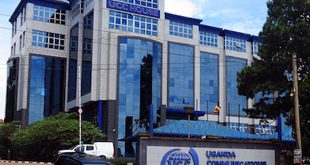
Beautiful art: More energy, creativity, and innovation without traditional hindrances of space or materials
Kampala, Uganda | DOMINIC MUWANGUZI | Kampala is witnessing a mushrooming of non-traditional art spaces on the local art scene. Different from traditional museums and galleries, none traditional art spaces in Kampala include Design Hub Kampala, 32⁰ East, Afriart on Seventh, The Big Kafunda and public avenues like the Royal mile- Kabaka Ajangala Road- in Mengo.
These are interesting because they are more open to the public and enable diverse audiences to access or interact with art regardless of social class or age. They also allow innovation and experimentation because they usually are large spaces, integrate their atmosphere with the artworks, and enable displays of site specific installations. They are perfect for experimental artworks; including permanent or impermanent sculptures, public installations, and performance art.
In the third edition of Kampala Contemporary Art Festival dubbed KLA ART 018, the organisers included sites along Kiyembe Lane- a busy street in the Kampala Central Business District, and Ham Mukasa House.
These were selected to enable the public- everyday people- to interact with the art and to inspire artists to create art outside the customary art spaces. The objective was breaking the stereotype that art is for the elite community or that it does not address the day to day issues faced by the average citizen on the streets.
Similarly, the organisers of the Kampala Art Biennale 2018 aka KAB 18 selected a derelict warehouse in the middle of a busy industrial park on Fifth Street to bring art and its producers; the artists, outside the comfort zone of the gallery with white washed walls and a serene environment.
In the derelict warehouse, the floor was dump and unkempt and so were the walls that had peeling paint and cracks. Here, the artists were challenged to create art with the political- social content of everyday life situated within the local and international context.
The warehouse also gave an opportunity to the public to interact with art in an unusual way and inspire new narratives as the unconventional display of art left the audience intrigued about art’s impact on life, how the artists produce it, and how it is consumed.
Sandra Ssubi’s installation titled `In Transit at Ggaba beach, an Island on Lake Victoria’, for example, was constructed from familiar media like fish skin, wooden boats, fish scales, old tyres, and plastic bags and bottles collected from the fishing community. With this approach, the artist successfully showed that art is not exclusive to particular people and has narratives for whole communities. The artist showed that the physicality of the landing site, fish market, and noisy space can inspire art.
Such impact is often absent in the traditional gallery space where art showcased is two dimensional and sometimes abstract. Where censorship of art is common, the dialogue on the political, socio-economic content of art in non-traditional settings has been appreciated more by audiences. The artists are also energised to be more creative and innovative without traditional hindrances of space or materials.
But non-traditional art spaces often face a challenge in terms of art supervision as few curators and critics are involved. This affects the quality of artworks exhibited. With a few exceptions, most emerging non-traditional art spaces suffer mediocre art production and display. They tend to interpret art as a commodity rather than a medium designed to inspire a particular conversation among the public.
 The Independent Uganda: You get the Truth we Pay the Price
The Independent Uganda: You get the Truth we Pay the Price



This blog was… how do you say it? Relevant!!
Finally I’ve found something which helped me. Kudos!
For example, when you have a personal computer, a notebook, as well as a tablet,
it is possible to play on any of them instantly. Thus, when they
come back to play, the bucks they have got is distributed with those people who are very likely to lose it all.
This may be called cross-breed cheating but that’s how a
cookie crumbles.